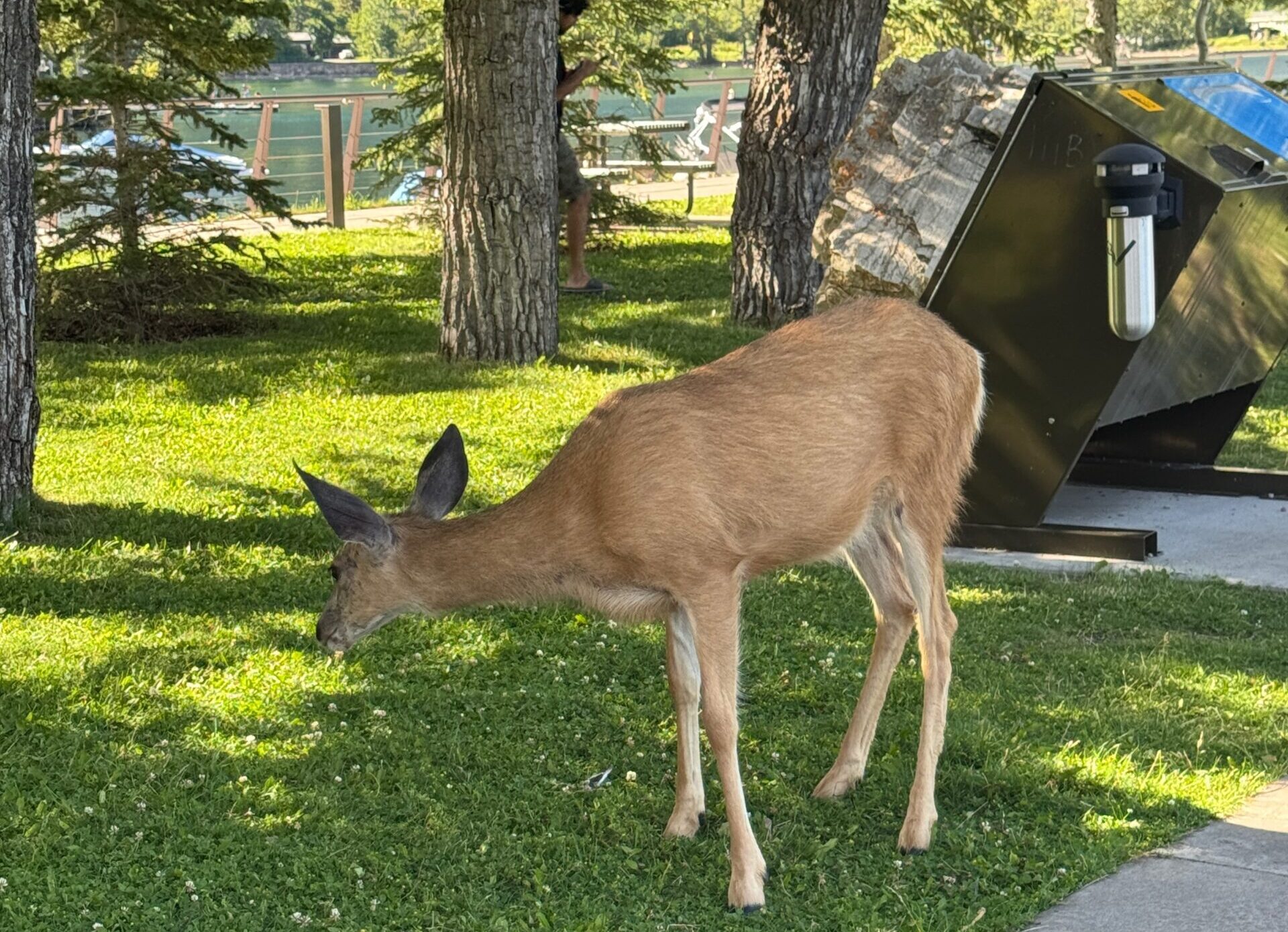By Samantha Tennent
Copyright farmersweekly

Reading Time: 3 minutes
Those who’ve been hunting will know how elusive deer can seem. But not in rural Canada.
With strict hunting and gun laws, and wildlife fiercely protected, deer graze openly and barely look up as you drive past.
It’s a thrill for visitors but a major frustration for farmers, who face damage to fences, pasture and crops, and can’t do much about it except during limited hunting windows.
That’s just one of the differences we noticed while travelling through rural Canada. We visited several ranches, each facing challenges and opportunities unique to their landscape and systems.
At Kingsclere Ranch in British Columbia, forestry and beef operations sit side by side. Alongside wildlife pressures, wildfire is a constant threat. Last year, Jeff and Sheila Bashier stood anxiously on their doorstep as flames raged across the hills in full view of their property. They were lucky this time, but the risk is always present.
Crossing into Alberta, we saw how the Dominion Land Survey shaped farming here. Land is divided into one-mile by one-mile blocks (almost 260 hectares). These are broken into “quarter sections” of around 64ha, which are the standard unit bought and sold. Lifestyle blocks are called “acreages” and typically cover 4ha. Land near towns is expensive, with strong competition for acreages.
Climate is another stark contrast with New Zealand.
Farmers have just a 90-day growing season, so if a crop hasn’t yielded or hay hasn’t come away before the snow, winter can be tough.
At Southern Cross Livestock near Calgary, Heather and Graeme Finn (an Australian expat) showed how their cattle remain in the paddock year-round. Crops are planted in late May and then laid down into swaths for the winter, a practice known as swath grazing. During this period, cows dig through the snow to feed, maintaining their condition on a high-protein and energy diet.
Sixty percent of Canadian farmland is planted in canola. Big machinery is the norm, and most farm gates are a whopping 9m wide to fit it through. Metal gates are rare – instead, Taranaki gates or the occasional tape gate are more common.
Management styles also differ. Most farmers set-stock rather than rotationally graze, and many see it more as a lifestyle than a business. With little debt carried on land, farms are largely family owned, and traditional manager roles are rare.
We also caught up with Ben Stuart, a Kiwi who has been farming in Canada for more than a decade. He met his wife, Sian, there, and together they’re now leasing their own place. Stuart said he was fortunate to begin with an open-minded employer, which allowed him to bring some New Zealand practices into his work. But he admitted that if he hadn’t grown up in NZ’s production-focused environment, he might easily have taken on the same “lifestyle” mindset as local farmers.



